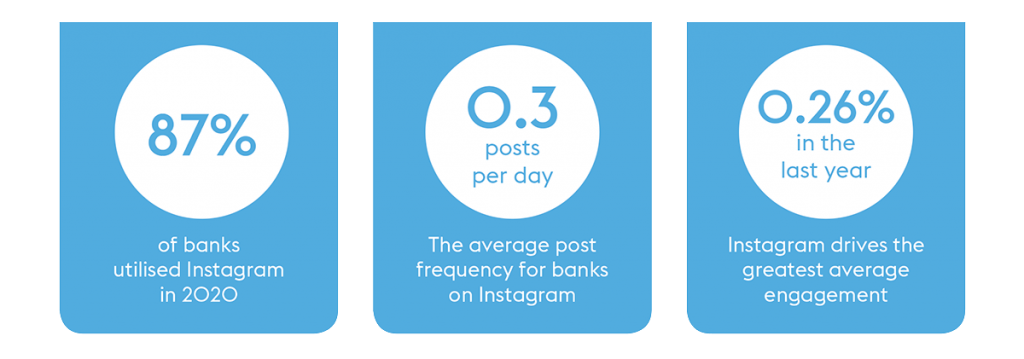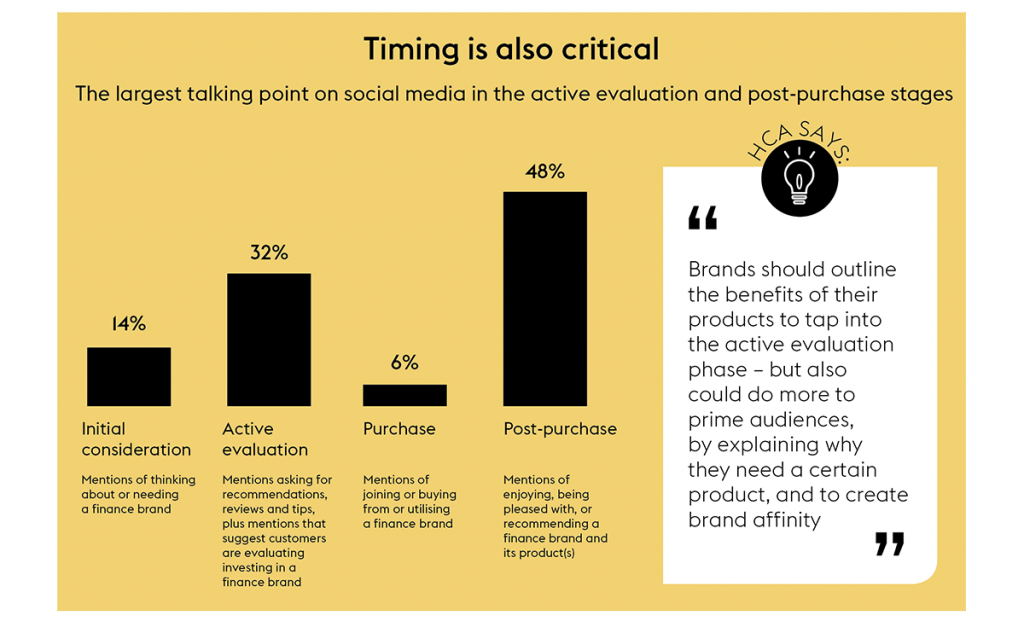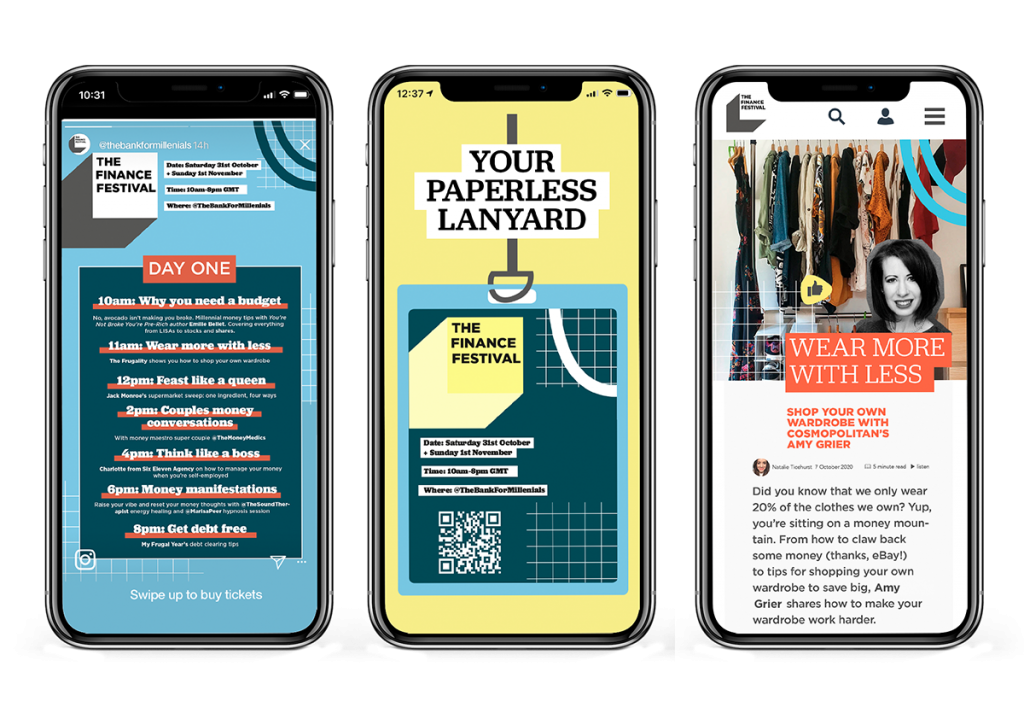Could social media unlock a new audience for banks?

We take a look at why social platforms offer an untapped opportunity for the financial sector
While many businesses have got to grips with TikTok and Pinterest – in fact, such platforms may be their marketing major player – in the financial sector, the social media landscape looks relatively bare. Despite 90% of banks boasting multiple social media platforms, the activity levels are surprisingly low. Just 87% of finance businesses are active on Instagram, with an average of 0.3% posts a day (despite it driving the most engagement of any social media platform), while visually-led Pinterest is utilised by just 47% [1].

These stats are sobering when you consider that millennials are, in fact, highly engaged and ready to talk money. A recent study conducted by Hearst shows that 53% of under-40s would like a greater understanding of how to make their money work for them, while 44% wish they had more knowledge regarding long-term financial schemes, such as those linked to retirement [2].
The fact is, under-40s lack the understanding of the older generation, no longer have ‘a job for life’, and need support to get their finances in order. Moreover, they are ‘ready and waiting’ for help and are used to being spoken to by brands via social media and digital platforms. And with that hurdle scaled, if the right messaging is put out, there is a huge opportunity to engage a market which is already affluent – and whose wealth is set to grow. The demand is clearly there, so why isn’t the supply?
HCA Tuned In To... Finance
Could social media unlock a new audience for banks? Download our infographic now for the full report
Where the land lies
As the stats show, banks are active on social media but with Facebook, Twitter and LinkedIn leading the way, they aren’t joining the conversation where the under-40s are. This could, in part, be due to the complications social media serves up, which banks may be hesitant to navigate. However, as social media offers a unique opportunity for banks – particularly those who get it right and get there first – it’s worth investing time and budget in the right kind of content.
‘I think banks have a lot of red tape to contend with. They want to make sure they are not seen to be giving out advice or anything that may be deemed as such,’ says Hearst finance editor Kalpana Fitzpatrick. ‘Social media probably throws up many challenges for banks but a social presence is what consumers want and even expect these days.’
Yes, contentious advice – such as promoting loans – could possibly receive backlash but there are numerous subjects to tap into that promote financial services while offering invaluable advice to a bank’s core audience. Articles about moving into first homes – for example, ’10 things to pack for your first day in your new home’ – inadvertently advertise banks’ commercial offerings and are relatively ‘safe’ content spaces. Similarly, lifestyle content offers a point of difference and a way to break away from the competition. Banks have a real licence to discuss real topics that affect this age group – such as how to talk about money in a relationship or how to start a business.
There is a real opportunity to engage this audience who have many key milestones ahead of them – starting businesses, buying first homes, getting married… Pinterest, for example, remains a relatively unused channel by finance marketeers and yet it gives clear visual signals around critical life moments, such as weddings and home renovation. It offers brands an unparalleled opportunity to serve up content, ideas and advice in a relatively untapped channel. It also offers a brilliant way to build trust.
‘These days, people care less about products in a traditional selling sense and more about how their bank can help them. It’s a great way to talk about what the bank is working on – such as climate change initiatives,’ says Kalpana. ‘I think social media is a great way to build trust as a lot of people will take action based on how much they trust a bank.’
‘It’s also an opportunity to stand out against bad advice. There are so many ‘influencers’ and ‘bloggers’ giving out incorrect information, so there is an opening for banks to be the trusted source and help young people who are increasingly looking for advice on everything from saving money and learning about investing, to buying a house or starting their own business. The pandemic has made them thirsty for money info more than ever before.’
The power of now
Despite the stereotypes of avocado brunches and devil-may-care attitudes, millennials are far more interested in finance than you might think. In fact, they’re acutely focused on money. 47% are considering buying a house – considerably more than the over-40s (where just 35% are focused on home ownership) and 42% of them are receptive to expert financial advice.[1]
To paint a brighter picture of the appetite and opportunity, 94% frequently consume content on their phone and 89% frequently use social media. They are ready, waiting and receptive to conversations via their screens. Yes, traditional above-the-line advertising will always have its place, but social media is the prime channel to reach millennials. By not talking to them where they are, the fact is, banks are missing out.
‘It’s critical that banks get involved in conversations on social media. If they don’t do it, then the bloggers and influencers giving out the wrong information will do it instead. I’ve seen bloggers tell people to get into matched betting or not to save into a pension and do property instead,’ says Kalpana. ‘Social media is a promotion opportunity that financial institutions should use to make sure people are doing the right things. It’s an opportunity to educate the nation at a time when it really needs it,’ she adds.
 Cosmopolitan’s executive editor Amy Grier agrees that social media offers a huge opportunity to relate to this audience in an honest way. ‘Online, we are also now upping our money content, with the help of a new financial editor contributing pieces on a monthly basis that sit across both print and digital. We have made huge strides in the way we are now as a society able to talk about previously difficult topics like mental health. It’s time we applied the same thing to talking about our finances and money concerns, too,’ she says.
Cosmopolitan’s executive editor Amy Grier agrees that social media offers a huge opportunity to relate to this audience in an honest way. ‘Online, we are also now upping our money content, with the help of a new financial editor contributing pieces on a monthly basis that sit across both print and digital. We have made huge strides in the way we are now as a society able to talk about previously difficult topics like mental health. It’s time we applied the same thing to talking about our finances and money concerns, too,’ she says.
The Opportunity Ahead
To engage this audience, it’s crucial to talk to them where they are: on Instagram, through podcasts and via video. As of September 2020, there were 27.25 million Instagram users and almost a third of those were aged between 24-34. They are also 4% more likely than the average person to consume online press.
‘I think under-40s need super-actionable, bitesize, relatable content that does not feel patronising or othering but speaks directly to their needs and current money struggles,’ says Amy. ‘Social more than other media outlets are all about peer-to-peer and more ‘fun’ than other areas, so I think anything too heavy wouldn’t land well on these platforms. But there is definitely an opportunity that should be explored,’ says Amy.
Leveraging the authority of financial experts and industry leaders in podcast formats could feed millennials’ ongoing appetite for financial content in a relatively untapped space, help banks to edge ahead of their competitors, and form a long-standing relationship with this audience. 49% of podcast listeners are aged between 25-44, and 59% of listeners say podcasts have the power to influence their purchase decisions. ‘I think content and events that dish out actionable advice and insight would do well via podcasts,’ says Amy.

Video is also go. 78% of the global population watch online videos and video content produces eight times the engagement of written articles (an average of 1322 shares per social post). Infographics are the second-most-powerful format (383 average shares) and TikTok clips offer potential for huge engagement and are relatively unexplored by banks.
The big idea
Banking content tends to fall into two main brackets: promoting services and communication around fraud prevention. Very few are focused on creating customer-first content, but the rise of the finance influencer proves there is real appetite for finance content. There is also a real opportunity to stand-out in a flat market and galvanize prospective customers into action by speaking explicitly to their wants and needs at the points where they consume content.
How? By creating trusted, cross-channel content that feeds this audience’s appetite for knowledge. A two-day virtual finance festival which called upon experts, influencers and industry leaders would not only draw in these digital natives but also create content that could be repurposed across multiple platforms. These might include digital articles, social, CRM and advertorial-style print for budget-efficiency, a cohesive customer journey and maximum ROI. This is just one example of an initiative that talks to millennials where they are – and there are many other ideas that could be explored.

How Hearst content agency can help
To communicate with this audience and establish a successful rapport, expertly crafted content is king. Hearst Content Agency has a team of brilliant creatives working for our clients to increase the reach, engagement and conversion of their owned content.
As an end-to-end agency, we use social and search analysis as well as unique Hearst data and in-house consumer finance experts to create bespoke content strategies for brands. We’re experts in generating social and digital content, magazines, video, audio and photography, and we work with clients as long-term partners or on a campaign basis.

‘It’s a really exciting time for the financial services industry to review their content strategies. There is a clear opportunity to reach a highly motivated audience, with potential to deliver lifetime value for brands,’ says Hearst Content Agency’s commercial strategy director Rachel Middlewick. ‘Those who act fast will get ahead of the competition, too.’
If you’re keen to review your content strategy to engage new audiences, drop us a line via www.hearstcontentagency.co.uk or get in touch with our strategy director: Rachel.middlewick@hearst.co.uk.


